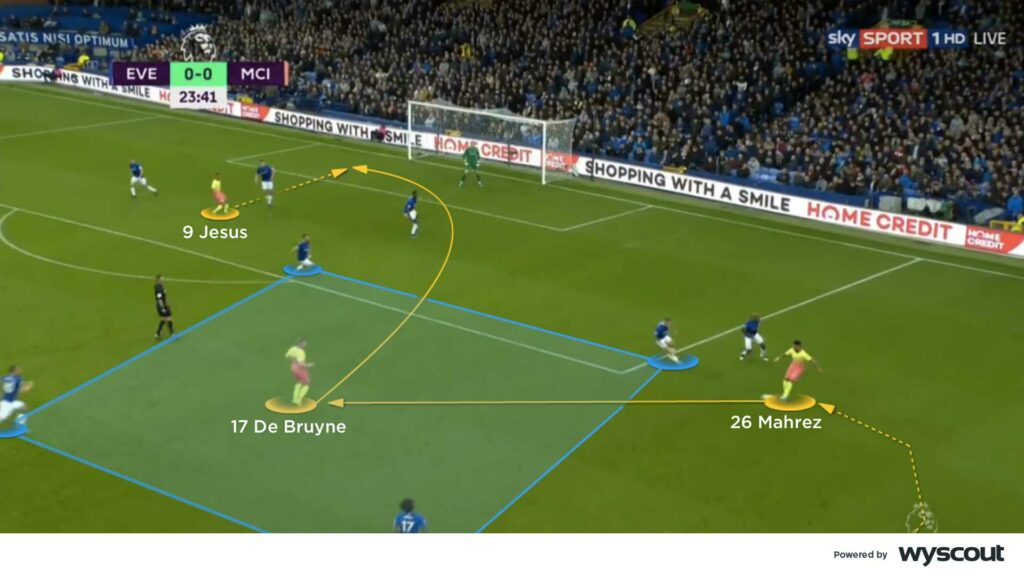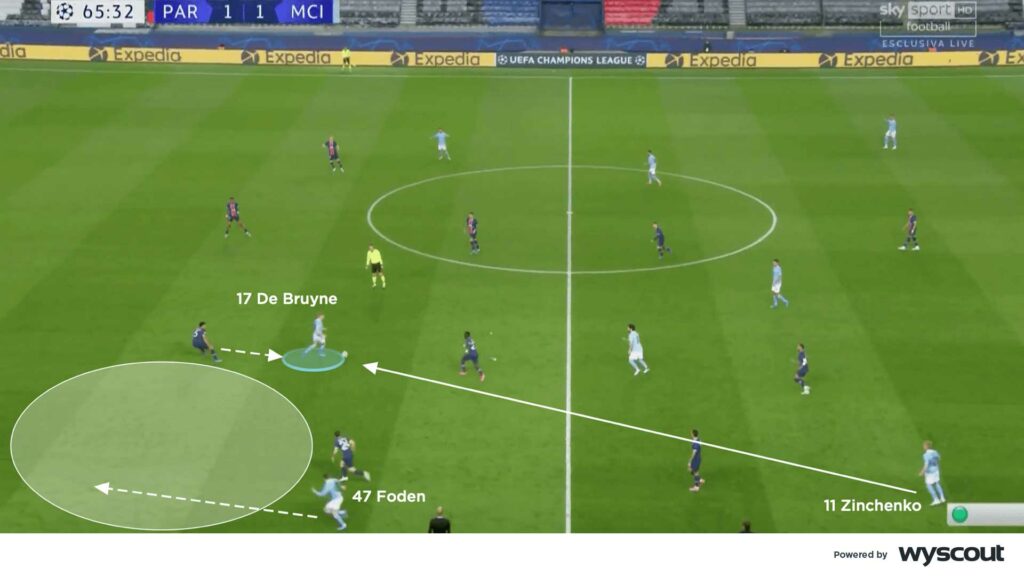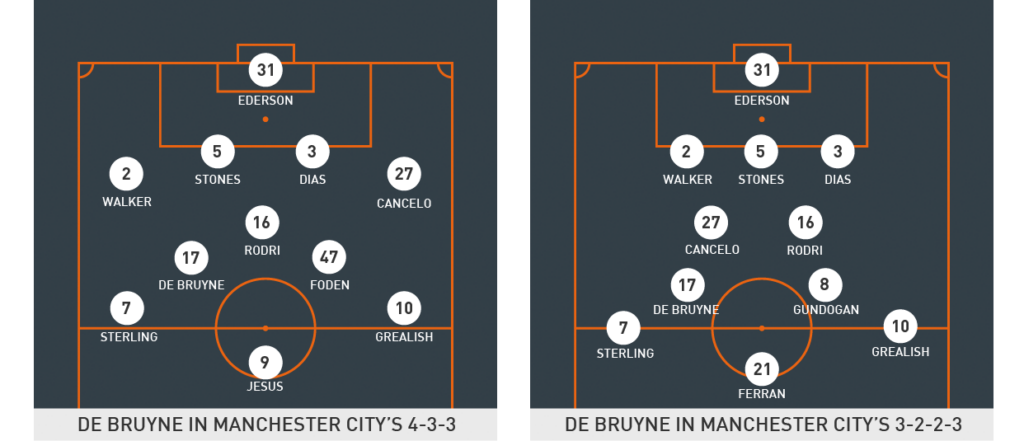
kevin de bruyne
Manchester City, 2015–
Profile
Despite Manchester City finishing 2019/20 18 points behind Liverpool, it was a campaign to remember on an individual level for Kevin De Bruyne. The Belgian, then 29, became only the second player in the competition's history to record 20 assists in a single season, matching Thierry Henry's total for Arsenal in 2002/03.
Like Henry 17 years earlier, De Bruyne was one of the best players in England but was unable to lead his team to the title. He was nonetheless consistently outstanding, and played a crucial role in City surpassing 100 Premier League goals in a season for the third time. The following campaign, he was once again key as City won the Premier League title for the third time under Pep Guardiola. “Kevin has something unique,” said Guardiola. “He can run; the vision he has. He sees things others cannot see. Right now, in the midfield position, he is the best [in the world].”
Tactical analysis
De Bruyne has qualities that extend to all areas of the pitch. His ability to create goalscoring chances from accurate deliveries is potentially unrivalled – he can reach the smallest spaces behind an opposing defence (below) with passes or crosses that are so powerful that defenders and goalkeepers struggle against them. Any attackers committing to forward runs thrive on those deliveries.
He can also pass equally well with both feet, through shifting possession from one to the other and playing accurate balls over varying distances, often through the smallest of spaces. He can therefore penetrate opposing defensive lines from numerous angles, and adapt to the press applied by his direct opponent. That he can do so means he cannot be forced on to a weak foot or side of the pitch, making him even more difficult to defend against.

Even if his priority is to create, rather than score, De Bruyne still offers a significant goal threat in the final third – often from outside of the penalty area, as he showed to devastating effect with a superb strike on the final day of 2019/20 against Norwich City that took his season's tally to a career-high 13 league goals. When he shoots from distance he requires little backlift so he can surprise opponents who struggle to react and block his shots, and he most commonly aims low and towards the bottom corners with power.
As is crucial when playing for one of Guardiola's teams, De Bruyne is capable of pressing ferociously. His tenacity and his desire to directly regain possession in advanced positions further demonstrates his desire to assert his authority on matches. When he presses over longer distances, the speed with which he approaches an opponent can lead to less success – particularly when confronting a nimble or experienced individual. If he does regain possession (below), his explosive qualities can lead to more effective transitions into attack. He is capable of driving forwards with power into space and over larger distances, which, when coupled with his ability to pass the ball, is just as effective during counter-attacks as it is against a compact defensive block.

Role at Manchester City
De Bruyne, who arrived at City as a number 10, has been asked to play in several positions in a variety of systems. He has also shown impressive maturity, intelligence and tactical flexibility to produce high quality performances in whichever role has been selected.
He has primarily been deployed as the right-sided number eight in City’s 4-3-3, meaning he largely occupies the right inside channel, and occasionally moves wide on the right. City build with width, and one player in the outside lane on both sides of the pitch, to stretch opponents and create space in the centre. Any spaces are available for De Bruyne to try to exploit by driving forwards himself or by delivering from and into a teammate who has run in behind.

Most commonly, City’s right-sided forward – Bernardo Silva or Riyad Mahrez – will provide their attacking width while their right-back – Kyle Walker or João Cancelo – offers delayed overlapping runs or moves infield to create a double pivot at the base of midfield alongside their defensive midfielder. When the latter happens, De Bruyne is given the freedom to move forward in the inside channel (above) and to provide the key link between attack and defence.
On the occasions the right-sided forward withdraws into a deeper position and draws the opposing left-back towards him, De Bruyne is presented with the freedom to move into the space behind that left-back and to deliver low crosses in behind – something he is incredibly skilled at. Progressing into the space outside the six-yard box is something City are very capable of, and De Bruyne is particularly dangerous when he gets into those positions, from where he consistently provides the kindest of chances for their striker.

His – and often City’s – most effective method of attack is through his crosses from narrow, deep positions. De Bruyne positions himself to provide an option for a backward pass from an advanced position on the right – at the maximum possible distance from his direct opponent – so that he can advance to meet a pass and deliver a first-time, whipped ball towards far-side runners with accuracy and pace.
During 2020/21, he also showed he can play effectively as a false nine, starting – nominally at least – as the furthest player forwards in key games, particularly in Europe. Just as Lionel Messi did for Guardiola’s sensational Barcelona, De Bruyne constantly moves away from the opposition’s defence to find space between the lines and to draw defenders out of position, creating space for teammates to exploit before he looks to find them running in behind (above).
When he plays as a false nine, City will attack in a 4-2-4, through three other attacking midfielders advancing to join De Bruyne. Those players will then make contrasting movements to try and stretch the opposition’s defence and create space for each other. Often, De Bruyne and the other central attacker will move into a deep position to form a box, with two others, around the opposition’s midfield and to create a central overload. Their wide players then look to time diagonal runs towards goal to get in behind. Given the passing ability De Bruyne and Silva possess, and the pace of Mahrez, Phil Foden, Raheem Sterling, Jack Grealish and Ferran Torres, doing so is hugely effective. De Bruyne is the complete midfielder, and his versatility makes him a dream for Guardiola to experiment with new approaches. They continue to prove a winning combination.



